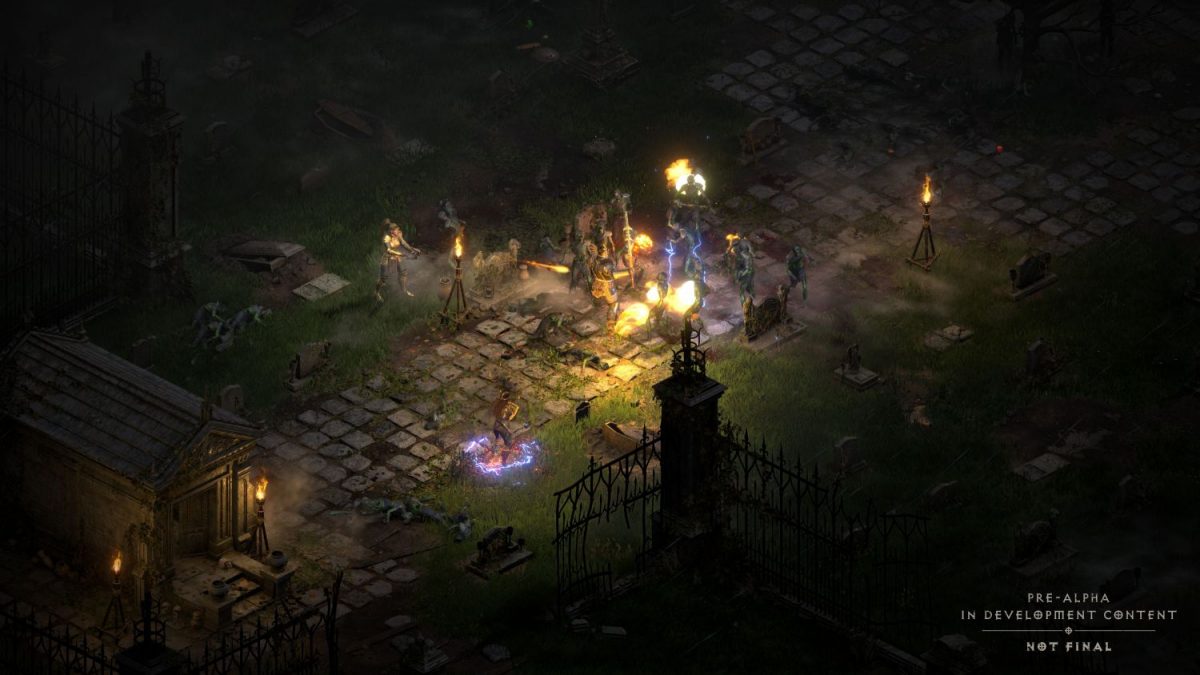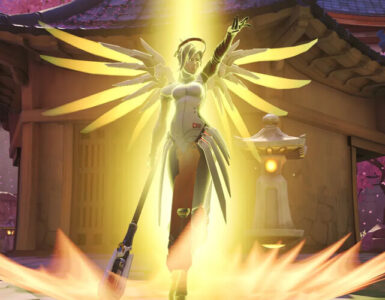Nostalgia is one heck of a powerful drug, and especially so if this sense of sentimentality stems from a particularly fond, enjoyable, or indelible memory. It could be the very first movie that left the deepest impression on you as a kid, or the very first book that managed to successfully teleport you into a new world, and for many in the action role-playing (ARPG) and gaming community, Diablo II was one of the more memorable undertakings to a dark fantasy realm during its era of release.

The adventure has been a well-travelled one for the past 21 years, and its end is still nowhere in sight. While the game’s player base is no longer as active as its peak days, the game is in hale condition, backed up by a dedicated group of enthusiasts, and enjoying the occasional wave of fresh updates and patches.
Hell, as an aging classic, is certainly doing well enough, and that’s an impressive feat by itself. But even the finest-looking or oldest hermit crabs will eventually have to change out their beautiful, homely shells, and that’s what Diablo II is getting sometime this year: a new, shiny coat of paint. Diablo II: Resurrected is the end result of this wardrobe change, complete with signature and familiar elements from the original, as well as minimal changes to everything else.
That’s because the upcoming title is not a remake, but a remaster instead – and it’s one that seeks to honour the authenticity of the original.

“With Diablo II Resurrected, what we really want to do is capture the same gameplay that they (the community) know and love, but also bring it to a modern audience as well,” enthuses game producer Maxine Virtue in a Zoom interview with Southeast Asia media. “All these new graphical upgrades that we’ve done, audio updates, and shot-by-shot remake of the cinematic – these are all very exciting for us.”
The project, which is helmed by Tony Hawk’s Pro Skater 1 + 2 studio, Vicarious Visions, will indeed ship with a polished and refined veneer. Officially announced as a full HD remaster of Diablo II and the Lord of Destruction expansion during the opening ceremony of BlizzConline, it comes well, resurrected, with greatly-revamped visuals, including a total remaster of each cutscene. Yes, all 27 minutes of them.
As Virtue puts it across concisely, what players will get is an “amazing 3D renderer that’s decoupled from the game launch [while] not beholden to 25 frames per second,” which would fit nicely into today’s graphically-competitive gaming landscape. The core gameplay, however, was to remain unchanged as much as possible, and it’s a rule that the team takes to heart very seriously.

“I know the thing is that we wanted to add a lot of quality-of-life elements, such as controller play, a shared stash, or auto-goal pick-up,” principal designer Rob Gallerani shares in the same interview. “[But] everytime we wanted to add a modern convenience, we had to be very careful to not pull away from the classic, so everything was a discussion, and that was a challenge we had to overcome.”
One feature that transpired from this tricky balance of the familiar and new efficiency is controller support – a first for the Diablo II title. As the game was never built for consoles in mind, bringing in controller support was the greatest obstacle for the team, and it took a fair bit of effort to find out what worked best without altering the essence of the original. It wasn’t like Diablo III where there was room to be different with a dodge function and a novel way to manage player inventory, because the addition of cross-progression to Resurrected meant that a lot more had to be the same across the board.
Gallerani gives an example of how the team attempted to toy around with various ideas. “When it came to the controller, one of the discussions was removing the inventory tetris to make the items like a list. When we tried that, it wasn’t the same Diablo; it felt like a different game, and didn’t have the element that made Diablo II special.”

The final product, after working out the kinks, is described by the man to be “almost identical” gameplay on both PC and console. “All of the skills and balances are exactly the same as the current live season of Diablo II; everything is identical,” he assures. You’ll still have to be in-game with the other party to trade items, there won’t be any potion and scroll stacking or individual, personalised loot in multiplayer raids, and you’ll have to be in online in a party and flag yourself as hostile to take part in player-versus-player (PvP) activities.
Resolution differences and controller-specific tweaks are about the only distinctions between the two platforms. Due to the limited mapping options, certain actions are tied to a default setting. Take, for instance, the Sorceress’ teleport ability: in the original game, wherever one clicks is where they’ll teleport to, but the controller’s lack of a cursor means that players will have a fixed moving distance instead. In other cases, a cursor can be spawned by holding down the corresponding button, and despite the slight differences in executing such abilities, all of them remain unchanged from each other and the original.

More impressively, the team’s commitment to replicating authenticity extends to the smallest of detail. While existing bugs and glitches will be fixed, a handful of Diablo II’s quirks are set to carry over to the remake, so non-breaking exploits like knowing where to stand in a certain boss fight and not take a single ounce of damage have all been included, except the “secret cow” level, which won’t be making a return.
In Resurrected, a handful of classic elements are given quality-of-life upgrades to bring an improved gameplay experience for the modern audience. In addition to features like item comparison, item linking and trade, auto-partying, hotkeys, and controller modding, accessibility options like colour-blind alternatives will also be offered as well. As it stands, small, nifty touch-ups are a staple in the artistic department as well, with existing designs bringing an extra dose of personality and narrative realism.
“With art, we’ve gone with the 70/30 rule, where 70 has to hit nostalgia,” Virtue explains. “You have to recognise what that character is and the environment you’re in is, so we’ve made sure to match all of the silhouettes, shapes, and colours of these characters.

“But what we’ve added [to the original aesthetic] is this kind of functional design and storytelling elements, so like the Barbarian, instead of having floating armour plates, you have these tiny, intricate belts that tie everything in together; he has places to store his axe and all of the metal details on him – all of these are designed with such intention.”
The slight refurbishment is a part of a much bigger artistic process that involves translating the retro 2D sprite art to the 3D visuals of today, which is no easy feat. With the added difficulty of elevation levels for 3D, the team had to figure out how to fit in the same readability of 2D into a more technologically-advanced space, all while also bringing greater richness and immersion to the game world.

Resurrected is what’s born of this collision of artistic and technical prowess, and the team’s taking it one step at a time for now. As such, no future content or an exact release window has been announced, but Gallerani confirms that the technical alpha will be opening up “very soon” on the game’s official website.
“We want to do it justice, we want to take the time to do it; we can’t really say how long we’ve been working on it, but we’re taking the time we need to make sure we really honour the authenticity of the original game,” says the man. An ambitious undertaking no doubt, but Diablo II Resurrected is already looking to be a welcome return to a beloved, familiar world – Hell has never sounded so appealing.













